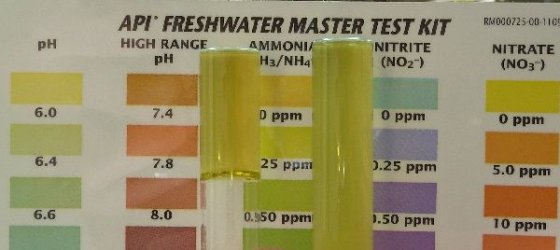denismen
New Member
- Joined
- Nov 16, 2012
- Messages
- 46
- Reaction score
- 0
Every time I test for ammonia it is between 0 - 0.25 but I based this on the colour chart with the API test kit. Every time I do a water check, always , the colour for ammonia readings never reaches a true yellow but is more between the yellow which is zero, and the pale greenish colour which is 0.25 and I always get this result.
Both my tanks give this reading every time but when I bring water to my local fish retailer they tested water several times and said it was zero, meaning safe, but when they showed me the water it was the same colour I always get which is not a true yellow.
Does anyone else use these water tests and do you get a true yellow reading from them.
My male guppy has shimmies and my female platy is jerking/twitching but not swimming in a shimmying way like the guppy, and I was tiold she may have shimmies also.
2 days ago: Ammonia = 0 - 0.25, Nitrite = 0, Nitrate = 80, PH = 8...changed 30% water and added "Disease Clear"
1 day ago: Ammonia = 0 = 0.25, Nitrite = 0, Nitrate = 40, PH = 7.8 - 8....changed 30% water
Will test water again in about 7 hours and see if I need to change water again.
Am I changing enough water also?
Both my tanks give this reading every time but when I bring water to my local fish retailer they tested water several times and said it was zero, meaning safe, but when they showed me the water it was the same colour I always get which is not a true yellow.
Does anyone else use these water tests and do you get a true yellow reading from them.
My male guppy has shimmies and my female platy is jerking/twitching but not swimming in a shimmying way like the guppy, and I was tiold she may have shimmies also.
2 days ago: Ammonia = 0 - 0.25, Nitrite = 0, Nitrate = 80, PH = 8...changed 30% water and added "Disease Clear"
1 day ago: Ammonia = 0 = 0.25, Nitrite = 0, Nitrate = 40, PH = 7.8 - 8....changed 30% water
Will test water again in about 7 hours and see if I need to change water again.
Am I changing enough water also?


